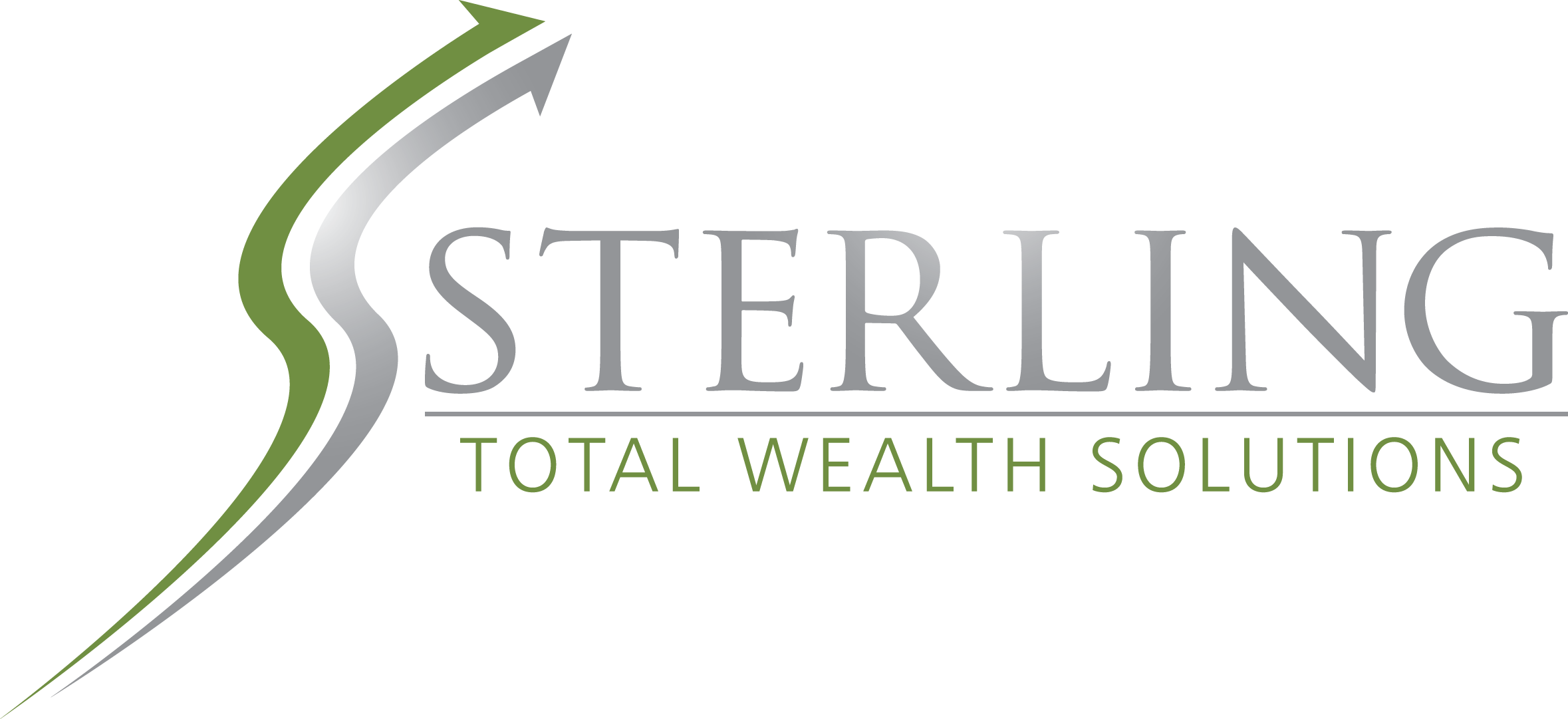In this month’s recap: In this month’s recap: Stocks dropped during the month as investors worried about stalled fiscal stimulus talks in Washington, the upcoming election, and new coronavirus cases in Europe.
Monthly Economic Update
Monthly Economic Update | Presented by Sterling Total Wealth Solutions | October 2020
Stocks dropped in September as investors worried about stalled fiscal stimulus talks in Washington, the upcoming election, and new coronavirus cases in Europe.
The Dow Jones Industrial Average, which lagged this year slipped 2.28 percent. The Standard & Poor’s 500 Index lost 3.92 percent and the Nasdaq Composite declined 5.16 percent.1
Tech Stocks Under Pressure
After a strong rally in August, investor sentiment quickly turned negative as technology stocks dragged down the overall market.
The retreat in the technology sector gathered steam as the month wore on, sending the tech-heavy Nasdaq Composite into correction territory over a three-day span following a recent record high. A correction is defined as a decline of at least 10 percent but not more than 20 percent from a recent high.2
A Few Bright Spots
The month did offer moments of optimism, however, that sparked brief rallies, such as an increase in merger and acquisition deals and further reported progress on a COVID-19 vaccine. However, concerns about the November election, the fading hopes for a fiscal stimulus bill, and an increase in European COVID-19 cases weighed heavily on investor sentiment.
As September came to a close, the market cut its losses, surging on the final two days of trading as legislators appeared to reopen fiscal stimulus talks.
Sector Scorecard
All 11 industry sectors were lower in September, with losses in Communication Services (−6.61 percent), Consumer Discretionary (−3.15 percent), Consumer Staples (−3.71 percent), Energy (−17.56 percent), Financials (−6.35 percent), Health Care (−3.87 percent), Industrials (−2.04 percent), Materials (−1.52 percent), Real Estate (−4.05 percent), Technology (−6.03 percent), and Utilities (−0.37 percent).3
What Investors May Be Talking About in October
The housing sector has been a bright spot in a challenging year and has seen strong consumer demand thanks to historically low interest rates.
Home building and home sales have set new records in recent months, while home builder confidence is at an all-time high. The National Association of Home Builders/Wells Fargo Housing Market Index posted a reading of 83 out of a possible 100 in September, well above its previous record high of 78.4,5
Housing accounts for 15 percent of the nation’s gross domestic product, so investors may watch for the sector to retain its momentum in the fourth quarter and into 2021.6
International markets struggled amid more coronavirus cases in Europe and concerns over the tensions between the U.S. and China.
The MSCI-EAFE Index fell 2.20 percent in September.7
European markets were broadly weaker. France dropped 2.91 percent, Germany lost 1.43 percent, and the U.K. slipped 1.68 percent.8
Pacific Rim stocks were mixed as Australia fell 4.04 percent and Hong Kong declined 6.82 percent. Japan notched a solid gain, tacking on 9.68 percent.9
Indicators
Gross Domestic Product: The final reading of the second-quarter GDP showed an annualized decline of 31.4 percent.10
Employment: The unemployment rate dropped to 8.4 percent as employers added 1.4 million jobs in August.11
Retail Sales: Retail sales growth slowed in August, rising only 0.6 percent as the supplemental unemployment benefits expired at the end of July. The benefits helped buyers in prior months.12
Industrial Production: Industrial output rose 0.4 percent, below economists’ expectations of a 1 percent increase.13
Housing: Housing starts fell 5.1 percent after sharp gains in the previous three months. Single-family home starts increased by 4.1 percent, but the overall result was dragged down by a 22.7 percent decline in multi-family starts.14
Existing home sales rose 2.4 percent from July and were 10.5 percent higher than August of last year.15
Sales of new homes rose to their highest level in almost 14 years, posting a 4.8 percent increase from the previous month.16
Consumer Price Index: Consumer prices jumped 0.4 percent in August, led by the sharpest increase in the cost of used cars and trucks in more than 50 years. On a year-over-year basis, inflation rose 1.3 percent.17
Durable Goods Orders: For the fourth straight month durable goods orders rose, increasing by 0.4 percent in August. New orders for nondefense capital goods, excluding aircraft, jumped 1.8 percent.18
TIP OF THE MONTH

Take a look at what is on your credit report. You are entitled to one free copy from each credit bureau annually. Why not have a look?
The Federal Reserve signaled that interest rates would likely not increase until 2023 following its two-day Federal Open Market Committee (FOMC) meeting that ended on September 16.19
Fed officials also stressed the importance of additional fiscal stimulus.19
Fed officials adjusted their outlook for unemployment, predicting it would average between 7 and 8 percent in the final three months of the year. Previously, Fed officials had expected unemployment of between 9 and 10 percent in the final calendar quarter of 2020.19
| MARKET INDEX | Y-T-D CHANGE | September 2020 |
| DJIA | -2.65% | -2.28% |
| NASDAQ | 24.46% | -5.16% |
| S&P 500 | 4.09% | -3.92% |
| BOND YIELD | Y-T-D | September 2020 |
| 10 YR TREASURY | -1.24% | 0.69% |
Sources: Yahoo Finance, September 30, 2020
Indices are unmanaged, do not incur fees or expenses, and cannot be invested into directly. These returns do not include dividends. 10-year Treasury real yield = projected return on investment, expressed as a percentage, on the U.S. government’s 10-year bond.
QUOTE OF THE MONTH

“Vision is the art of seeing things that are invisible to others.”
JONATHAN SWIFT
THE MONTHLY RIDDLE

What is no sooner spoken than broken?
LAST MONTH’S RIDDLE: Sally promised Kate today that she will tell Kate a big secret on the day before four days from the day after tomorrow. If today is Saturday the 13th, on what day and date will Sally tell Kate her big secret?
ANSWER: Thursday the 18th.
Securities offered through Registered Representatives of Cambridge Investment Research, Inc., a Broker/Dealer, Member FINRA/SIPC. Advisory services offered through Cambridge Investment Research Advisors, Inc., a Registered Investment Advisor. Sterling Total Wealth Solutions and Cambridge are not affiliated.
To learn more about Sterling Total Wealth Solutions, visit us on the web at www.sterlingtotalwealthsolutions.com
Know someone who could use information like this? Please feel free send us their contact information via phone or email. (Don’t worry – we’ll request their permission before adding them to our mailing list.)
- The Wall Street Journal, September 30, 2020
- MarketWatch.com, September 12, 2020
- FastSet Research, September 30, 2020
- CNBC.com, September 22, 2020
- EyeOnHousing.com, September 16, 2020
- Federation of American Scientists, October 2, 2019
- MSCI.com, September 30, 2020
- MSCI.com, September 30, 2020
- MSCI.com, September 30, 2020
- CNBC.com, September 30, 2020
- The Wall Street Journal, September 4, 2020
- The Wall Street Journal, September 16, 2020
- The Wall Street Journal, September 15, 2020
- CNBC.com, September 17, 2020
- CNBC.com, September22, 2020
- CNBC.com, September 24, 2020
- CNBC.com, September 11, 2020
- The Wall Street Journal, September 25, 2020
- The Wall Street Journal, September 16, 2020
